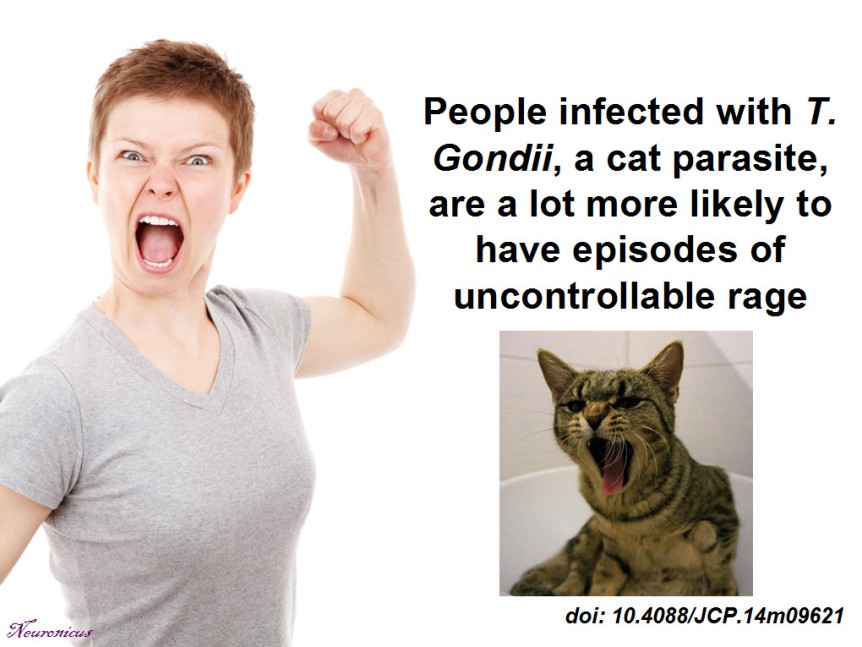From all the mental disorders, bipolar disorder, a.k.a. manic-depressive disorder, has the highest risk for suicide attempt and completion. If the thought of suicide crosses your mind, stop reading this, it’s not that important; what’s important is for you to call the toll-free National Suicide Prevention Lifeline at 1-800-273-TALK (8255).
The bipolar disorder is defined by alternating manic episodes of elevated mood, activity, excitation, and energy with episodes of depression characterized by feelings of deep sadness, hopelessness, worthlessness, low energy, and decreased activity. It is also a more common disease than people usually expect, affecting about 1% or more of the world population. That means almost 80 million people! Therefore, it’s imperative to find out what’s causing it so we can treat it.
Unfortunately, the disease is very complex, with many brain parts, brain chemicals, and genes involved in its pathology. We don’t even fully comprehend how the best medication we have to lower the risk of suicide, lithium, works. The good news is the neuroscientists haven’t given up, they are grinding at it, and with every study we get closer to subduing this monster.
One such study freshly published last month, Cao et al. (2018), looked at a semi-obscure membrane protein, ErbB4. The protein is a tyrosine kinase receptor, which is a bit unfortunate because this means is involved in ubiquitous cellular signaling, making it harder to find its exact role in a specific disorder. Indeed, ErbB4 has been found to play a role in neural development, schizophrenia, epilepsy, even ALS (Lou Gehrig’s disease).
Given that ErbB4 is found in some neurons that are involved in bipolar and mutations in its gene are also found in some people with bipolar, Cao et al. (2018) sought to find out more about it.
First, they produced mice that lacked the gene coding for ErbB4 in neurons from locus coeruleus, the part of the brain that produces norepinephrine out of dopamine, better known for the European audience as nor-adrenaline. The mutant mice had a lot more norepinephrine and dopamine in their brains, which correlated with mania-like behaviors. You might have noticed that the term used was ‘manic-like’ and not ‘manic’ because we don’t know for sure how the mice feel; instead, we can see how they behave and from that infer how they feel. So the researchers put the mice thorough a battery of behavioral tests and observed that the mutant mice were hyperactive, showed less anxious and depressed behaviors, and they liked their sugary drink more than their normal counterparts, which, taken together, are indices of mania.
Next, through a series of electrophysiological experiments, the scientists found that the mechanism through which the absence of ErbB4 leads to mania is making another receptor, called NMDA, in that brain region more active. When this receptor is hyperactive, it causes neurons to fire, releasing their norepinephrine. But if given lithium, the mutant mice behaved like normal mice. Correspondingly, they also had a normal-behaving NMDA receptor, which led to normal firing of the noradrenergic neurons.
So the mechanism looks like this (Jargon alert!):
No ErbB4 –> ↑ NR2B NMDAR subunit –> hyperactive NMDAR –> ↑ neuron firing –> ↑ catecholamines –> mania.
In conclusion, another piece of the bipolar puzzle has been uncovered. The next obvious step will be for the researchers to figure out a medicine that targets ErbB4 and see if it could treat bipolar disorder. Good paper!

P.S. If you’re not familiar with the journal eLife, go and check it out. The journal offers for every study a half-page summary of the findings destined for the lay audience, called eLife digest. I’ve seen this practice in other journals, but this one is generally very well written and truly for the lay audience and the non-specialist. Something of what I try to do here, minus the personal remarks and in parenthesis metacognitions that you’ll find in most of my posts. In short, the eLife digest is masterly done. As my continuous struggles on this blog show, it is tremendously difficult for a scientist to write concisely, precisely, and jargonless at the same time. But eLife is doing it. Check it out. Plus, if you care to take a look on how science is done and published, eLife publishes all the editor’s rejection notes, all the reviewers’ comments, and all the author responses for a particular paper. Reading those is truly a teaching moment.
REFERENCE: Cao SX, Zhang Y, Hu XY, Hong B, Sun P, He HY, Geng HY, Bao AM, Duan SM, Yang JM, Gao TM, Lian H, Li XM (4 Sept 2018). ErbB4 deletion in noradrenergic neurons in the locus coeruleus induces mania-like behavior via elevated catecholamines. Elife, 7. pii: e39907. doi: 10.7554/eLife.39907. PMID: 30179154 ARTICLE | FREE FULLTEXT PDF
By Neuronicus, 14 October 2018



